Fosi Audio V3 Hifi Stereo Desktop Class D Amplifier – Orange Wheel, Music Play
Fosi Audio V3 is a $129 USD high-quality entry-level Power Amplifier with a 300W x 2 promised power, a really tiny design, and exceptional support from Fosi. Given the price point, we will be comparing V3 to other entry-level stereo amplifiers, including AIYIMA A07 PRO (89 USD), Fosi Audio BT20A PRO (99 USD), and Fosi Audio TB10D (79 USD).
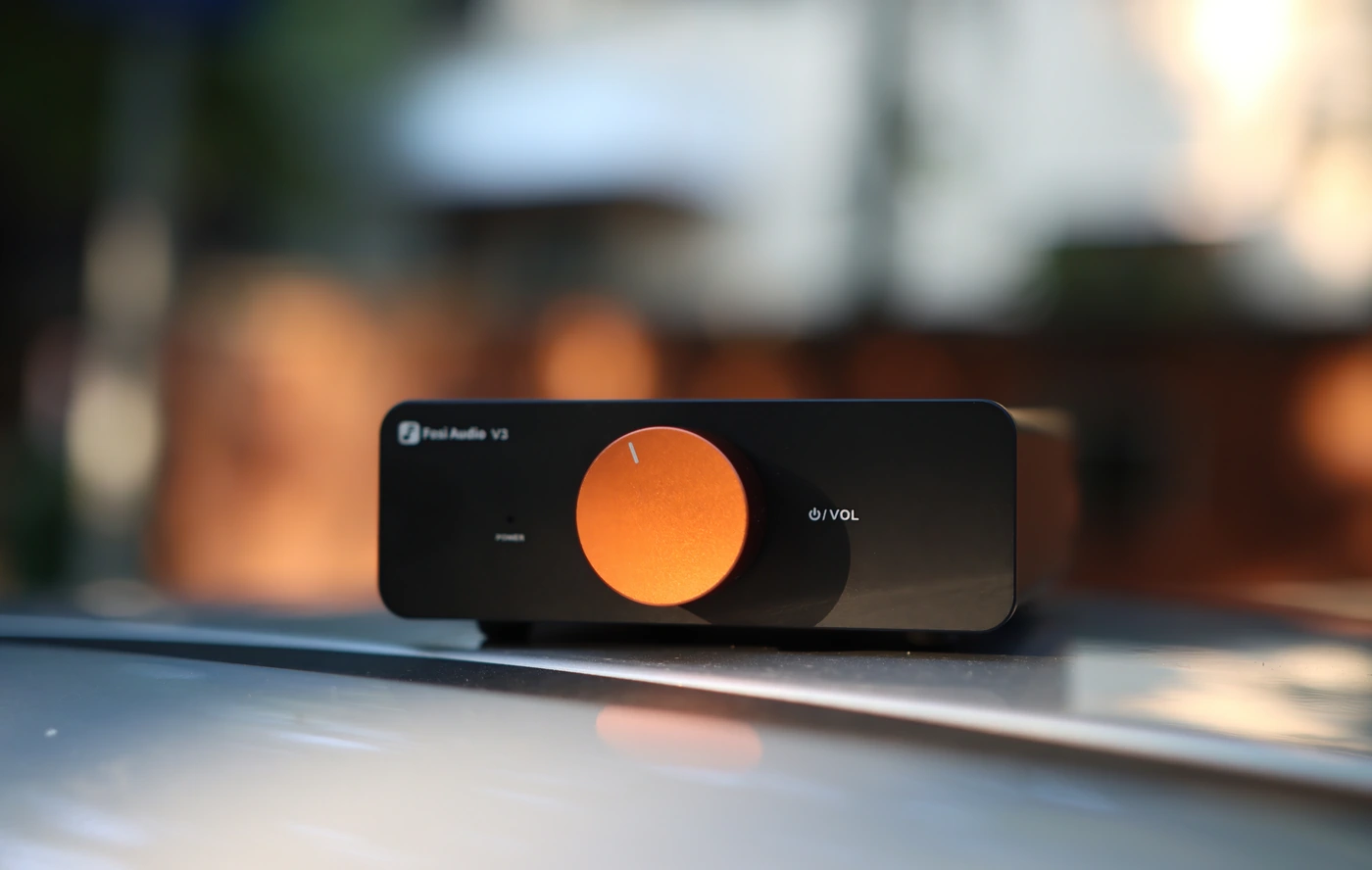
Introduction
Fosi Audio is a company that is able to deliver high-quality products for extremely low prices, to the point where they have hifi stereo amplifiers cheaper than the GaN chargers I purchase for my smartphone, so I am really enthusiastic to review their amplifiers, and share the news with all of you, to make sure you will have enough money left for high-quality speakers, and get an exceptional experience all in all. All Fosi Audio products are generally available on Amazon, which is one of the best places to grab. As an Amazon Influencer, I earn from qualifying purchases, and using the purchase links in my reviews helps me maintain this website and YouTube channel. The maximum output per channel can be found on the Amazon page, which is the best place to order the V3 from, and there we can see that you can achieve the 300 W x 2 only for speakers of 4 OHM impedance, and only with the strongest, 48V 5A power converter, the default 32V 5A converter offering 125W per channel for 4 OHMs, and 65W per channel for 8 OHMs, which is pretty much what you’d expect from a unit of this size and shape.
I’d like to thank Fosi Audio for providing the sample for this review, in exchange for my honest opinion. This review is a description of my personal experience.
Product Link
You can grab one from www.amazon.com here – https://amzn.to/49yzZ22
If you’re in the UK, you can grab one from www.amazon.co.uk here – https://amzn.to/49LM2Jz
And if you’re from Europe, you can grab one from www.amazon.de here – https://amzn.to/3T5JYpX
Build Quality / Aesthetics / Functionality
With a small unit comes an orange knob, at least in this special edition version that we have here for review today. The unit has ventilation holes at the top, ventilation at the bottom, and it uses a Class D amplifier. At the back, we have small, but standard speaker connectors, a power input, which works with all 3 converters that Fosi Audio offers, and an RCA Line In, plus a Pre output in the form of a 3.5mm jack (useful for connecting a separate subwoofer if need be. The PRE output is not volume controlled, so it is not that useful for a subwoofer unless you’re keeping V3 at max volume too and controlling the volume from the DAC.
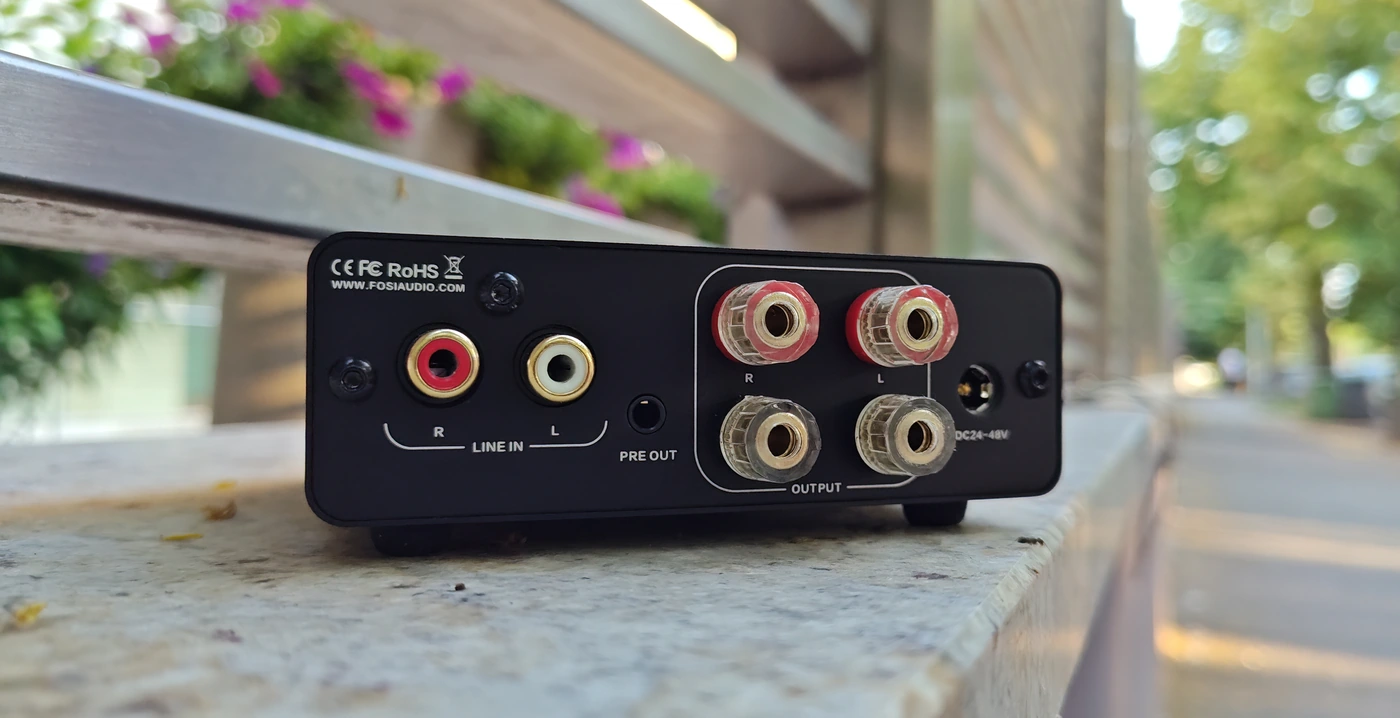
The company quotes a huge 300W per channel driving power for Fosi V3, but they also state in the fine print that to achieve this power you have to use the pricier 48V power supply, while the standard unit priced at 109 USD comes with a smaller, 32V power supply. The price for the best power supply, which uses GaN tech is 169 USD, quite an increase from the meager pricing for the base version. You can find a wealth of information on the Amazon page about the unit, its power and actual usage, so please check that out as well to learn about what most users have to say about V3 as well.
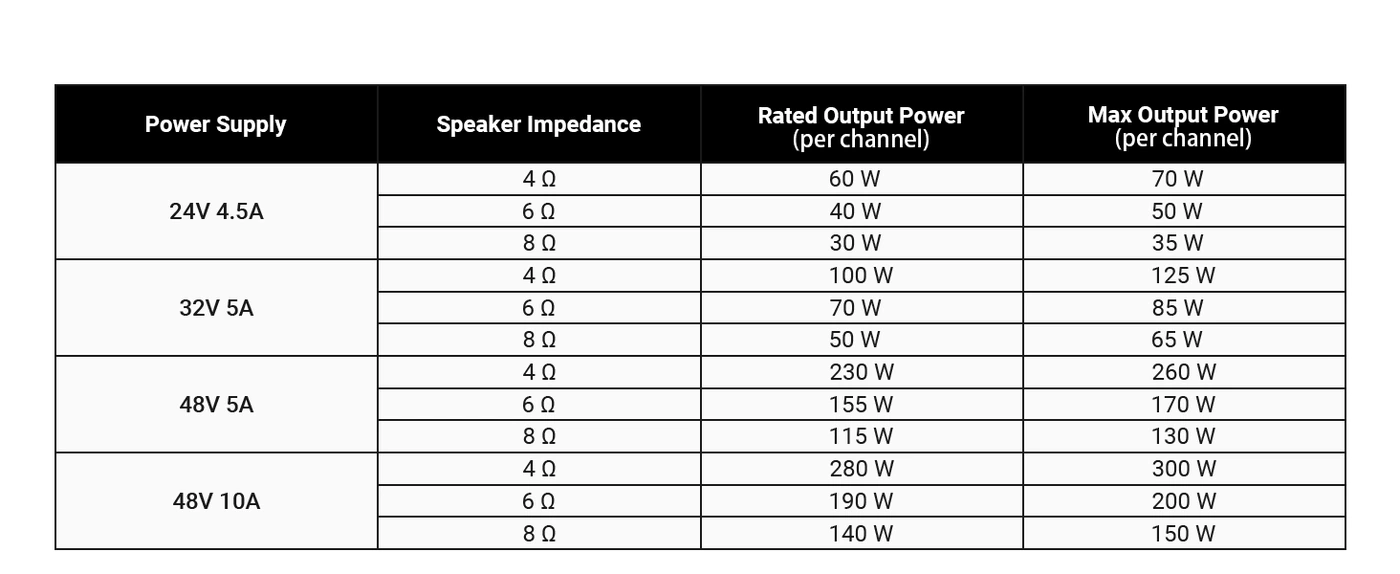
Despite the unit being Class D, it can get quite hot, so the heatsink is attached to the main case, for better cooling. The default power amplifier is Texas Instruments TPA3255 Class-D Power Amplifier. We have Sumida audio inductors, NCC high-capacity filter capacitors, German Wima output Capacitors, and Japanese ELNA Capacitors. The volume wheel is handled by the Taper A Pot, which is logarithmic, so it gets better control at lower volumes. The sound of the V3 is customisable, and this is a big part of its design, it has replaceable op-amps, with two plug-ins NE5532 OP-AMPs, which can be replaced by SS3602, MUSES02, and OPA2134PA. All of those are units that I had the honor to explore before and which have a really beautiful sound, so the limits of V3 will be in power handling and volume / dynamics delivery, as the tuning will be something that can be changed slightly by using a different OP-AMP.
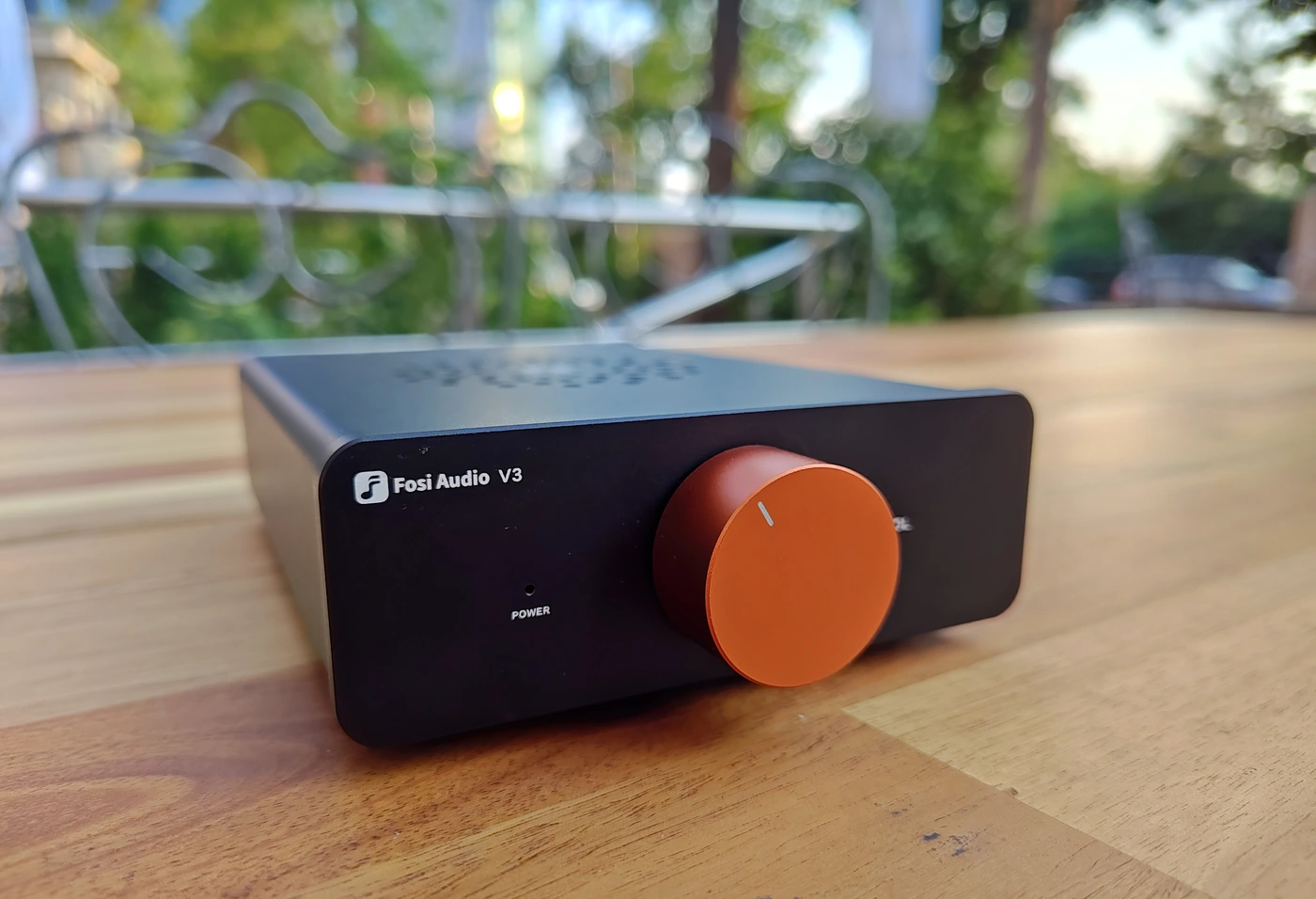
The unit is compact, and before testing I’ve been having fears that it may be unable to handle speakers, but it can actually handle both bookshelf and tower speakers just fine. It can put on some movement in those bass drivers, and the likes of Amphion Argon3s, KLH Model Five, and NHT C3 are not out of reach for the mini Fosi V3. In fact, Fosi Audio V3 can drive those speakers even if you’re using the Aperion Audio Super Tweeters above the speakers, there’s nothing stopping it. Even at maximum volume, there is zero and absolutely zero self noise, the volume control is indeed logarithmic, and there is no problem that I have noticed with the unit while using it. Both higher impedance and lower impedance speakers are handled nicely, and Aperion Audio RST MKII have absolutely no noise with the Fosi Audio V3, which is nice to hear, as those have been hard to tame for a long while. I managed to plug in a pair of Pylon Audio Diamond 30 MKII as well, and Fosi Audio v3 is totally able to handle them, although the extension in the bass is not as deep compared to uber high-end amplifiers like Keces S300+.
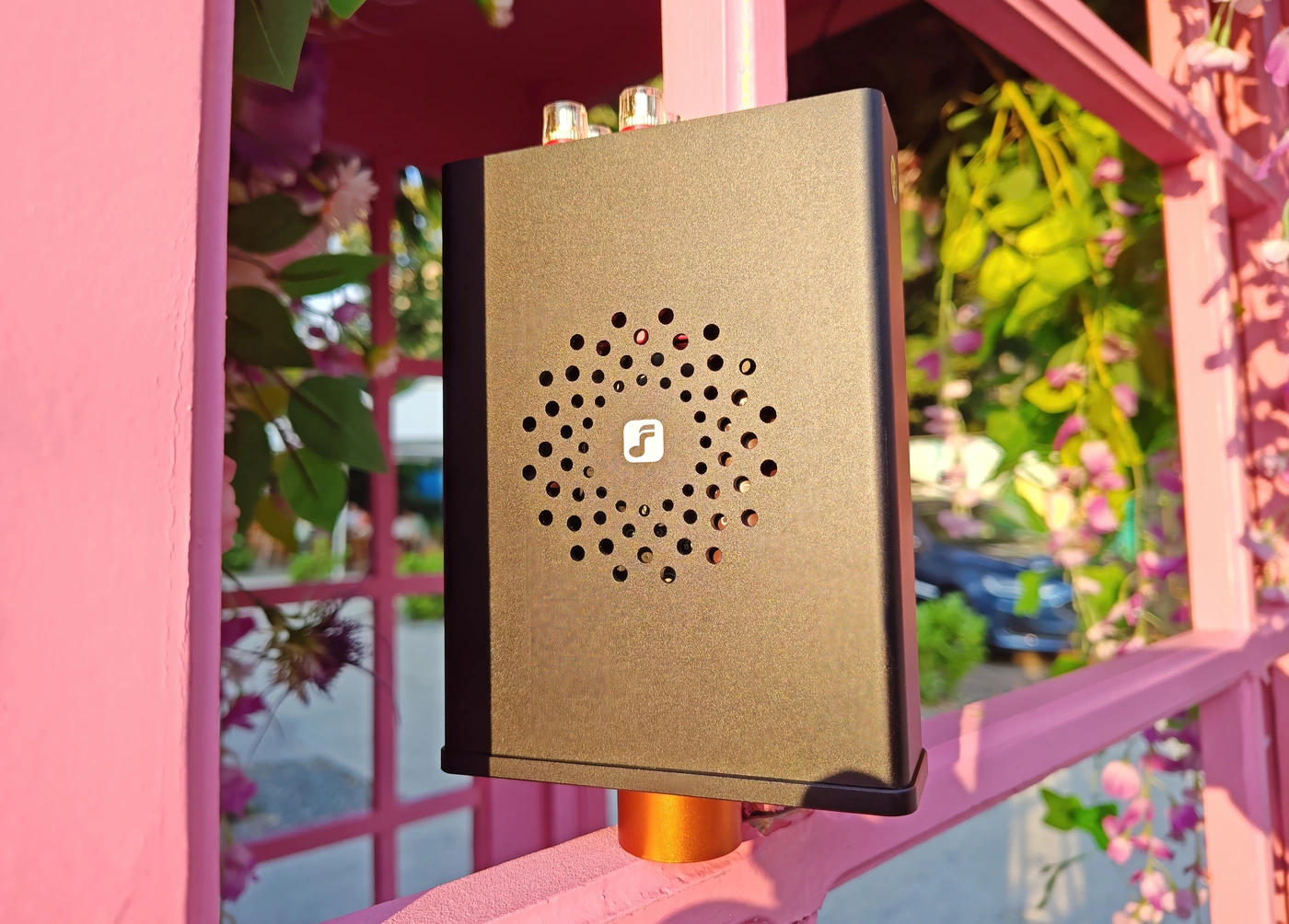
Even at max volume for long periods of time, driving a complex set of speakers, the unit stays relatively cool, and nowhere near as a Class A or Class AB mode Keces S300+ or Cyrus One Cast. This being said, what surprises me for a speaker amplifier is how controlled and low-distortion Fosi Audio v3 is compared to the price range, where the background noise levels are insanely high, especially when you add the RST mKII Super Tweeters to a setup. The low distortion and self noise can be seen from the THD too, which is just 0.003% for V3, while for most amplifiers in the same price range, it is 0.3% and above, and the SNR of V3 is also super high, at 110dB, while TB10D for example has a SNR of 90dB.
Sound Quality
When you have a good equipment selection, you must have good music too, but with Fosi Audio V3 most music will sound pleasing. This is because Fosi Audio V3 sounds smooth, lean, laid-back and relaxed, with a fairly good dynamic range, natural towards intimate midrange, and a presentation that couldn’t offend even the most sensitive to listeners, they roll off softly the treble, make the treble transients slow and smooth, take out the grain from the sound, and make everything just silky smooth. Naturally, this means detail is good only if you’re comparing the Fosi V3 to a high-end Amplifier, but it sounds more detailed than any of the other Fosi Audio amplifiers I tested to date, so they truly win for the price point. Usually, you should avoid thinking of the price, but with V3, it costs so little that it compares to other amplifiers that cost pennies.
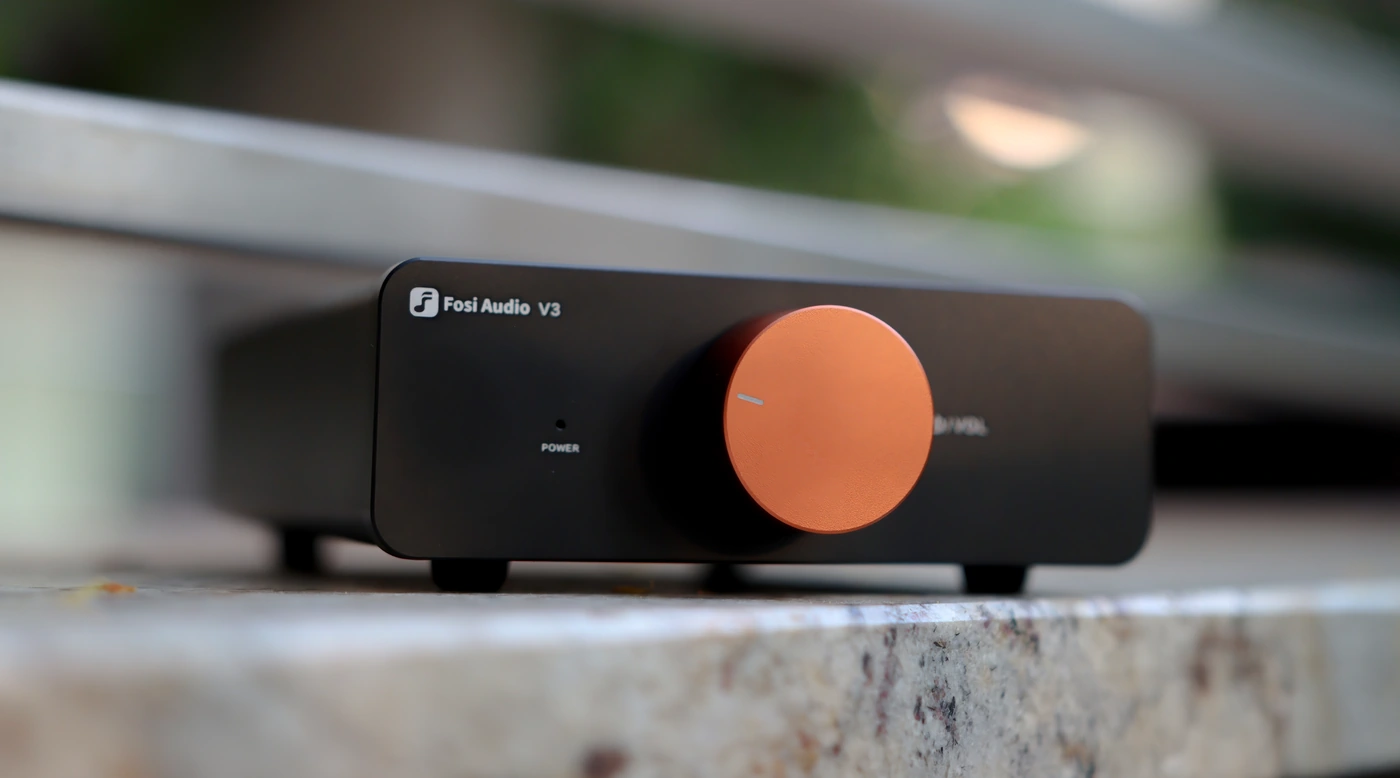
The bass of the Fosi V3 is where you may feel like it is lacking, at least a little bit, since here it will struggle to properly drive speakers which are naturally hard to drive. Actually, most speakers sound a bit limites as driven by Fosi V3, the bass extension is on the shallower side, although it is still convincing, it can reach 45 Hz with both full sized tower speakers, like Pylon Audio Diamond 30 MKII, but also with Amphion Argon3S, and with NHT C3. The bass response is not fully linear, and while with other amplifiers, you get the same tuning and signature at all volumes, Fosi V3 sounds deeper, thicker, bassier at higher volumes, having better extension and punch, but leaner and smoother at lower volumes, which makes it a unit that sounds better the louder you go.
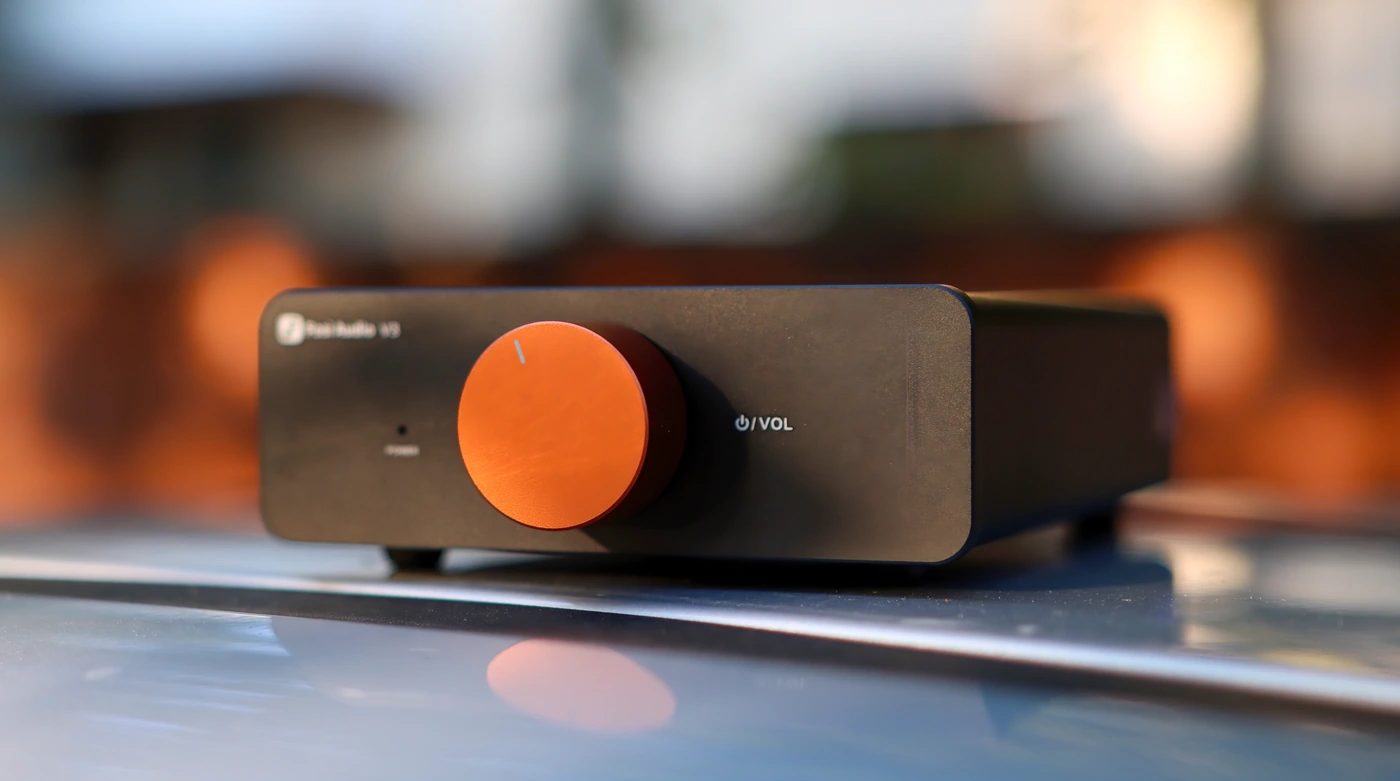
Speaking of the volume, you can use the volume wheel until about 3-4 PM, after which it starts distorting, but you can easily push most speakers north of 115 dB – 120 dB, so you’ll likely never feel the limitations of the volume headroom. This high headroom means that you can add some EQ to it and still be within the headroom limit. I have tested this limitation with both variable but also fixed volume DACs, and the list includes HIFIMAN Serenade, HIFIMAN EF600, JDS Labs Element III MK2 Boosted, FiiO K11, and FiiO K9 PRO ESS. Beyond about 3 o’clock, the sound gets distorted, as in, having too much gain, like you’re turning the gain dial on a guitar amplifier loudly. There is still zero background noise, so the volume acts as a gain level.
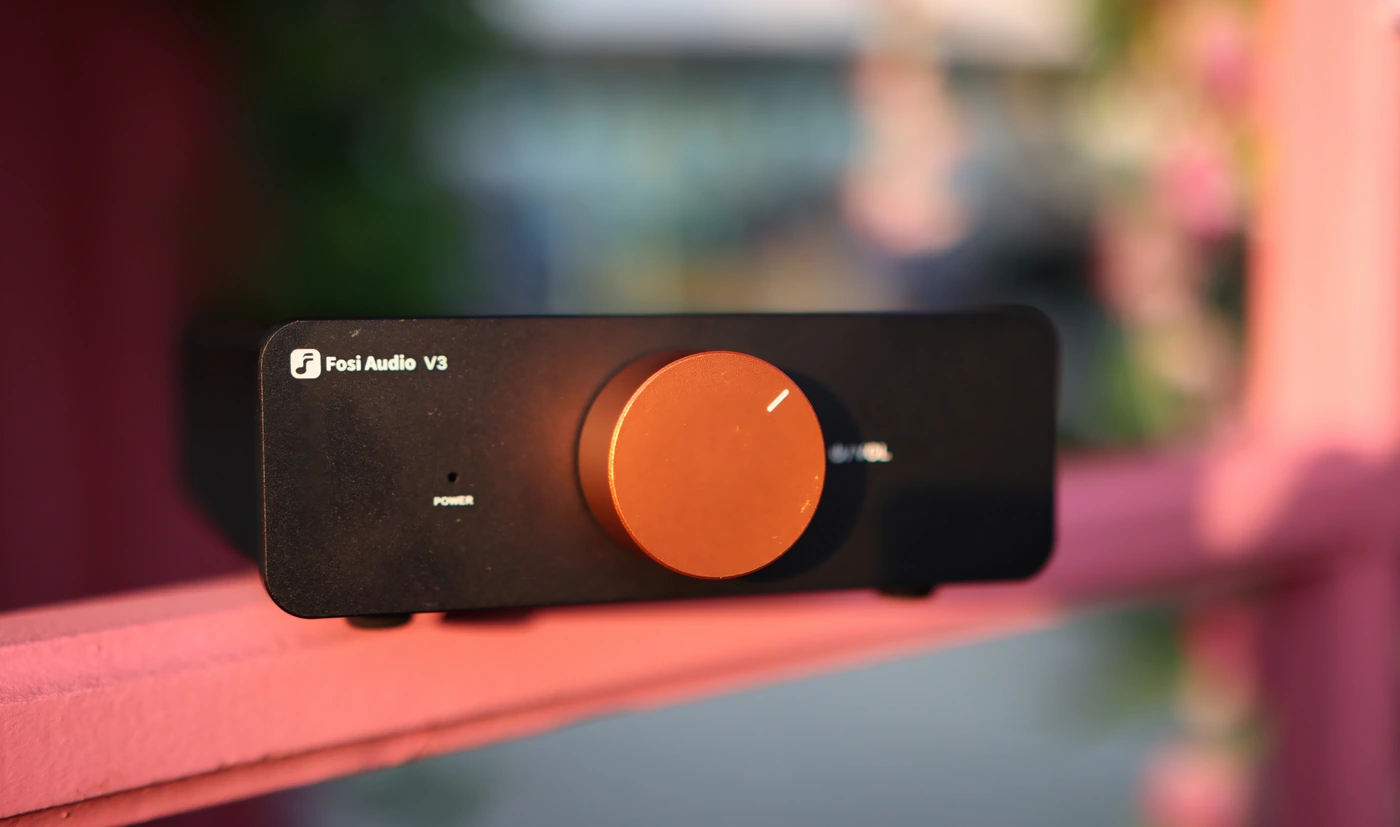
Fosi Audio designed a smooth midrange with a laid-back, relaxed presentation at lower volumes, and it gets more punchy, more dynamic and more direct at louder volumes. The overall clarity is excellent, Fosi V3 is able to present music with most instruments audible clearly, and with voices audible clearly, if the speakers and the DACs are good too. The transient response in the midrange is slow at low volumes, and becomes faster at higher volumes, likely part of the Class D Entry-Level design, the slew rate increases with higher power levels, so at low volumes, textures and micro details are lost, while at higher volumes they become present and evident. Since we’re talking about speakers, this is a limitation of speakers and room acoustics as well, a room will absorb and disperse finer details at lower volumes, there’s air, and objects that interact with the sound, but I can make the statements above because I am using all the speakers I am reviewing as nearfield monitors, so what I am hearing is the raw direct sound they get, with very little room acoustics. I am also using minimal room acoustics treatment to be sure my room isn’t the worst out there.
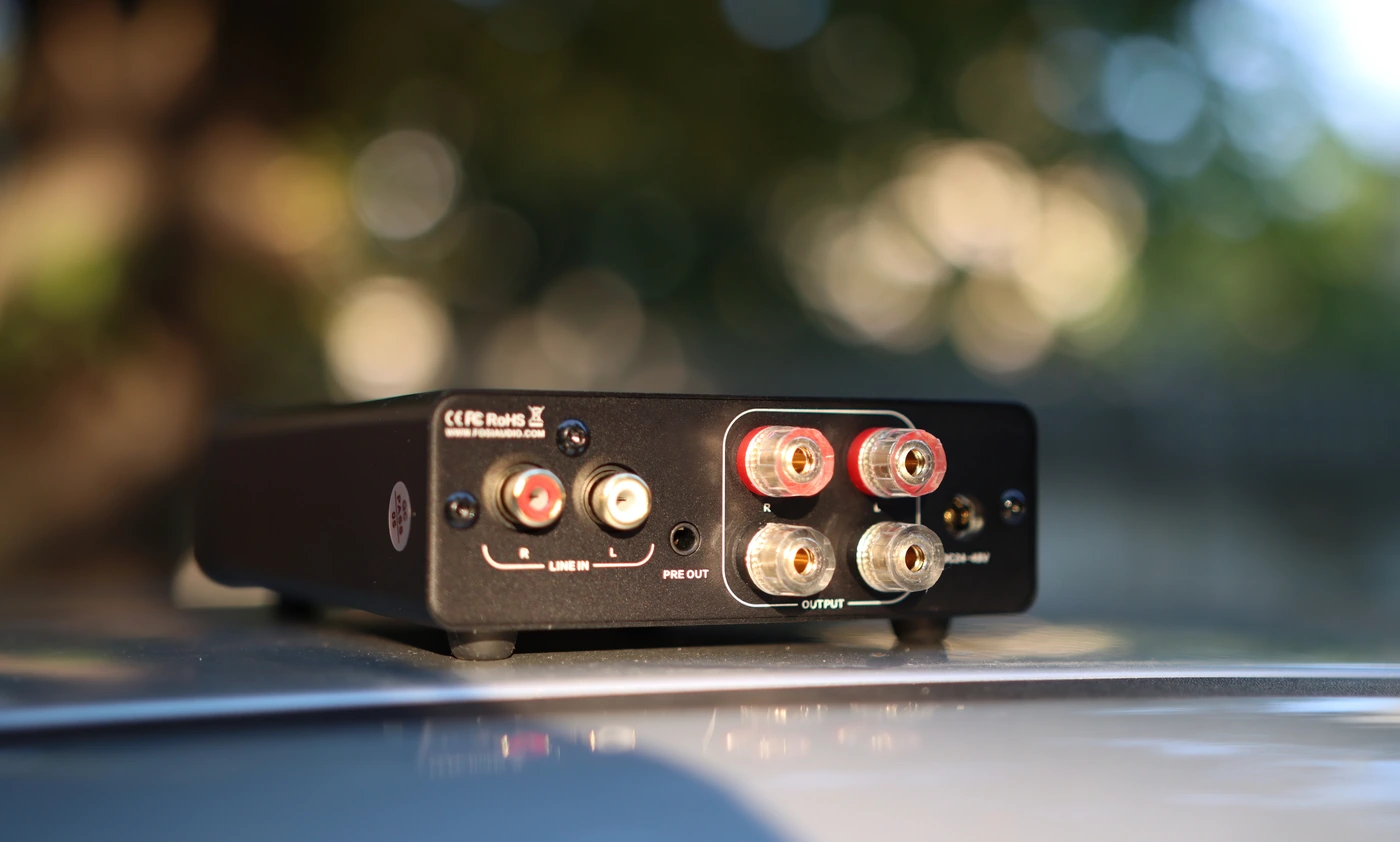
With a slower transient response in the midrange, the treble response is even slower, we have a really smooth, grain-free, and texture-free, fluid treble that is smooth, even with super aggressive music like Infant Annihilator. I am saying relaxed and laid back, even when having the RST MKII from Aperion Audio installed, so even with super tweeters you still have a relaxed, smooth treble, softly rolled off above 14 kHz. The soundstage is natural towards the intimate, with the space being created being natural, most instruments being projected within the confines of the room you’re listening in. Overall, this is a pleasing, easy to digest signature that will satisfy most listeners nicely.
Comparisons
Fosi Audio V3 vs Fosi Audio TB10D (129 USD vs 79 USD) – The basic design of both units is similar, but the power converter that comes with TB10D is of a lower power and it has a much lower driving power and a harder time getting the same volume, control and resolution as V3. TB 10 D also has the issue of having more background noise, it is not linear, and the EQ has to be engaged to get a fully neutral sound. With V3, you also do not get a neutral sound, but a smooth and rolled off one, so this is a tie. Overall, I would always stretch the budget to get Fosi Audio V3, it sounds better, behaves better with speakers, it is more powerful, more controlled, more detailed, and has a lower background noise / self noise, for just a moderately higher price. The only disadvantage of V3 is that it doesn’t have EQ wheels as TB10 D, but since with TB 10D you need to use those to get an actual linear sound, I would go with V 3, which is much closer to natural / neutral without any extra effort.
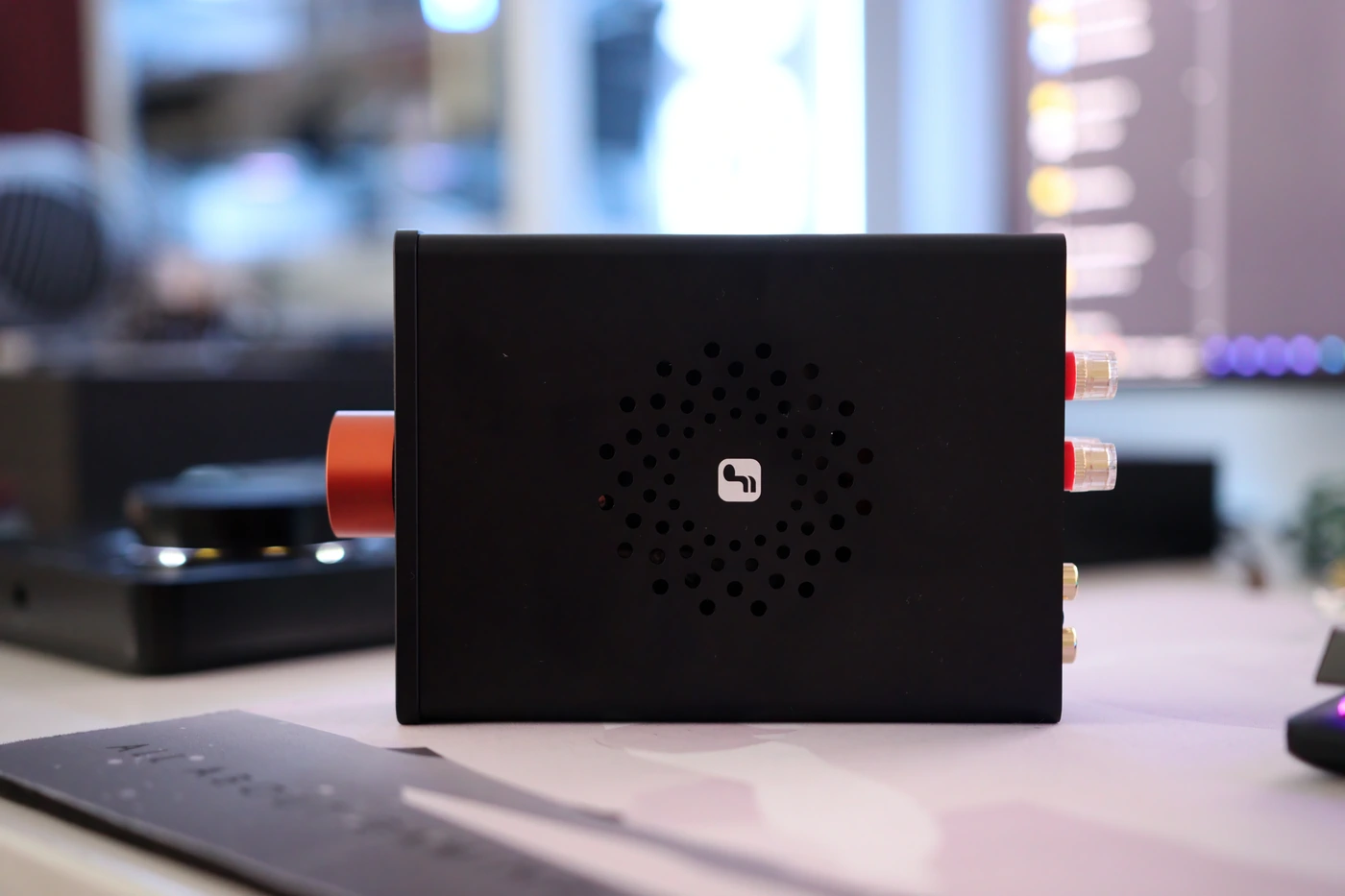
Fosi Audio V3 vs AIYIMA A07 PRO (129 USD vs 89 USD) – Both units have a standard shape and type, both have standard speaker connectors, and both can use multiple power converter bricks. Just like the other Fosi Audio units we’re reviewing today, A07 PRO has EQ wheels, and you can change the sound quite a bit, but the bluetooth input does not sound good enough to be a considerably useful feature. The sound of A07 PRO is slow, with little texture, and V3 sounds a bit more natural, v3 is smoother, more relaxed, cleaner, leaner, and smoother, both having a rolled off treble without a strong presence. V3 generally has a lower self noise, better SNR and a lower THD, being the better amplifier technically.
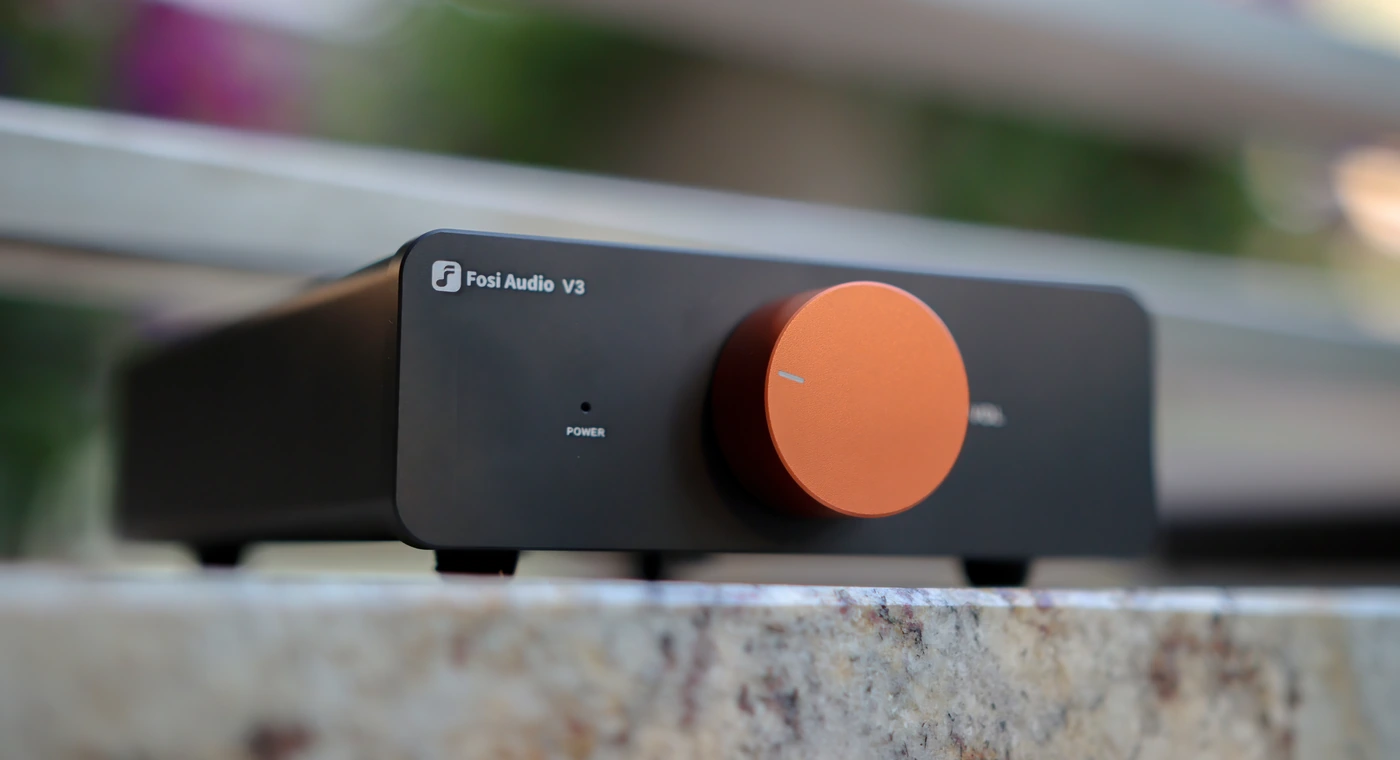
Fosi Audio V3 vs Fosi Audio BT20A PRO (129 USD vs 99 USD) – We have EQ wheels for BT20A, and at first I thought this would be a unit with bluetooth, but it is also a basic speaker amplifier. The driving power and abilities of Fosi Audio V3 are much better than those of BT20a, both have a slow bass response, slow transient response and a smooth sound with very little texture to it. The THD and distortion of V3 is much lower, the SNR is higher, and the price is just marginally higher, so you should grab V3, it is the better unit from Fosi Audio, BT20A only has the EQ wheels as a novelty, but the speaker amplifier performance of V3 is quite a lot better.
Value and Conclusion
With a super affordable price, lower than what we’re typically seeing for speaker amplifiers, headphone amplifiers, and lower than expected for our hobby, Fosi Audio V3 comes to take on the world. They manage to offer exceptional performance for the price paid, the sound can get incredibly loud, but with zero distortion, they made a unit with zero self noise, no background hissing, no weird sounds that will take you away from your music, and this is just the most relaxed, smoothest sounding amplifier I heard so far, with so little noise that products costing 5-6 times the price should learn from it, because I heard self noise from Taga Harmony amplifiers costing a couple hundred USD, and from other Fosi Audio products too, so the next one we’ll be reviewing should reveal whether the company was able to solve noise for good.
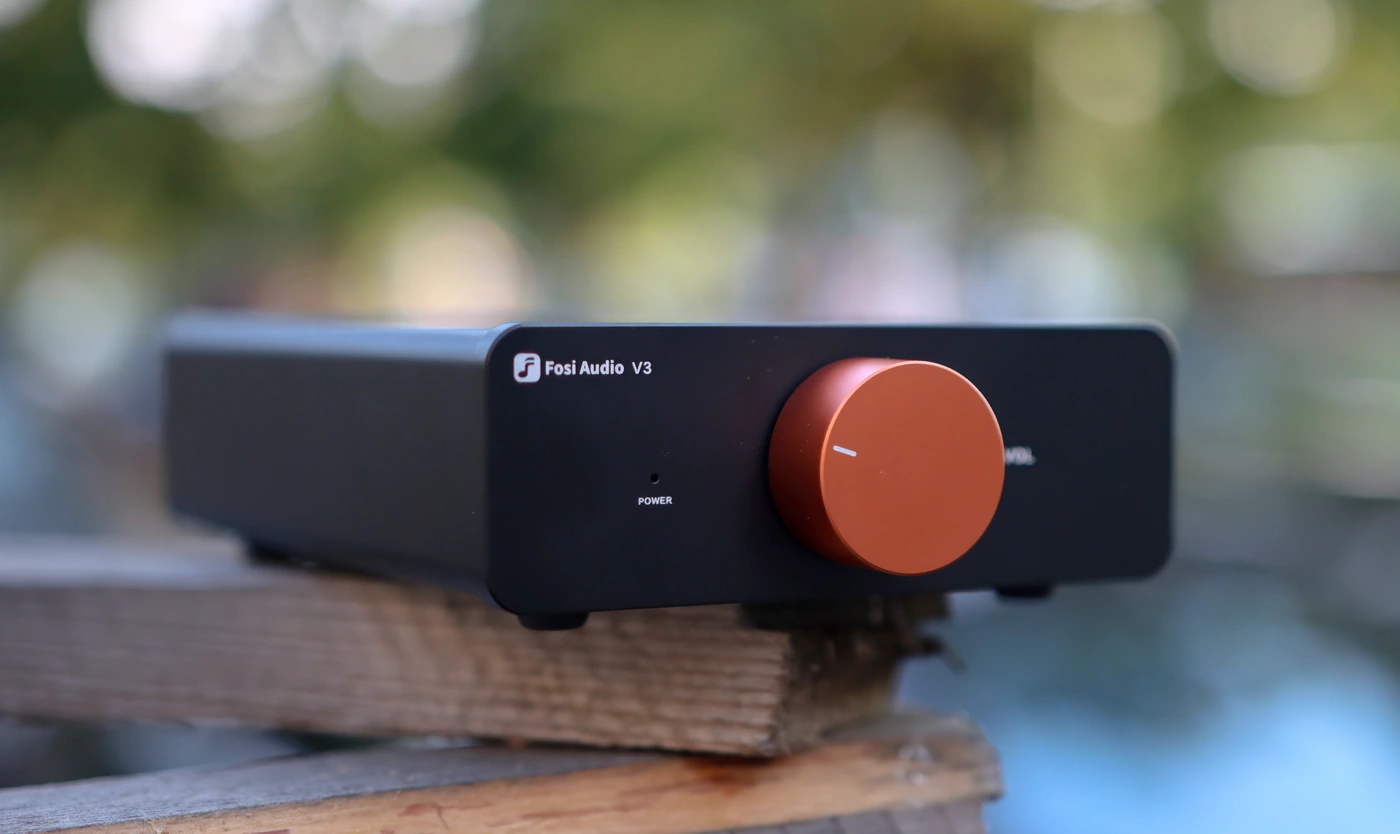
At the end of the day, if you need a simple class D power amplifier that won’t get hot, won’t increase your power bill, but can drive all your speakers well, has an exceptionally smooth, clean and lean sound, with no fatiguing elements, but with a good clarity for the price, and a natural-intimate soundstage, Fosi Audio V3 can totally deliver all that you’re looking for and protect your wallet, allowing you to put all your money towards the best speakers you can find.
Technical Specifications
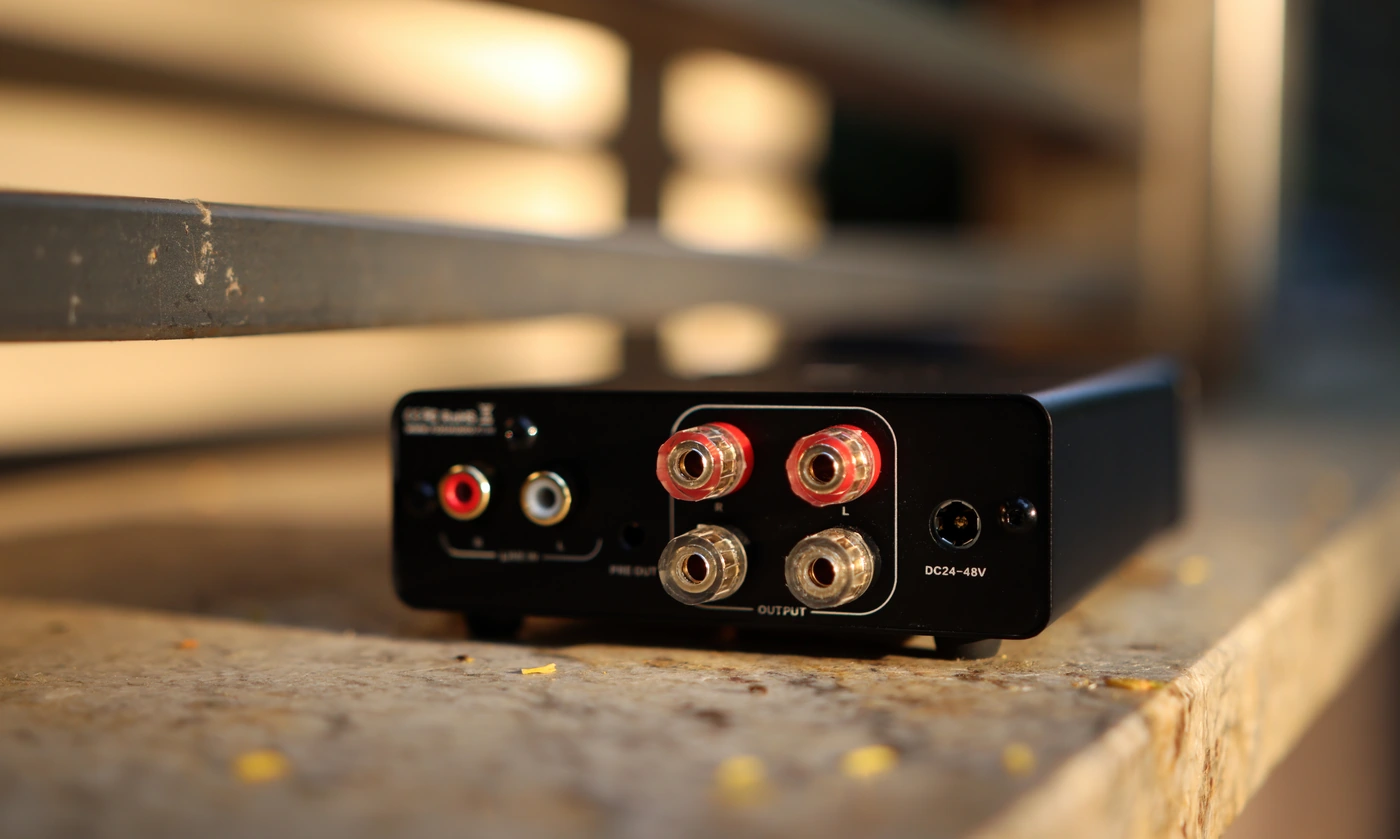
Max Power Output: 300Wx2@4Ω
SINAD: 88dB | SNR: ≥110dB
THD: ≤0.003% | Noise Floor: 140uV
Frequency Response: 20Hz-20kHz
Product Link
You can grab one from www.amazon.com here – https://amzn.to/49yzZ22
If you’re in the UK, you can grab one from www.amazon.co.uk here – https://amzn.to/49LM2Jz
And if you’re from Europe, you can grab one from www.amazon.de here – https://amzn.to/3T5JYpX
--- Please remember to stay safe, and always have fun while listening to music!---
- If you have a dime to spare, please donate, and help us! It would make the day brighter for me and my wife-
Full Playlist used for this review
We listened to more songs than those named in this playlist, but those are excellent for identifying a sonic signature. I recommend trying most of the songs from this playlist, especially if you’re searching for new music! The playlists are different for Spotify, Tidal and Youtube, and based on the songs I enjoy and are available on each!
https://www.youtube.com/playlist?list=PL_cjBXGmwSHSdGcwuc_bKbBDGHL4QvYBu
https://open.spotify.com/playlist/5J3oloz8Riy9LxEGenOjQ0?si=979ba4f082414be7
https://tidal.com/browse/playlist/330fd544-8e5b-4839-bd35-676b2edbb3d5
--- Contact Us ---





